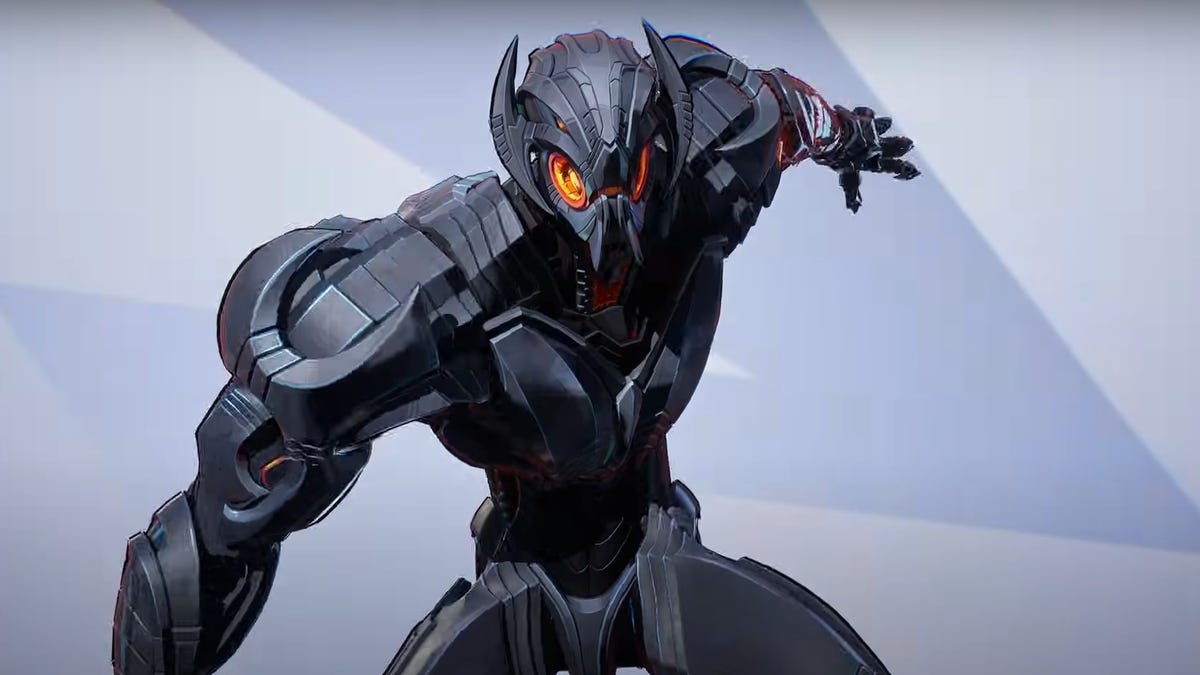Marvel Rivals has been a breath of fresh air for the hero shooter genre, combining popular comic book characters and chaotic third-person shooter action to create epic team fights that keep me coming back for more.
Fast-paced combat is the name of the game in Marvel Rivals, which is why it could come across as a confusing development that the next limited-time mode launching in Marvel Rivals Season 2.5 is a form of auto battler (also frequently referred to as auto chess).
Ultron’s Battle Matrix Protocol is an experimental mode launching on June 6, where six players will draft teams of heroes to go head to head with their opponents’ drafts. You’ll be able to support your AI teams while the new hero Ultron (also debuting in season 2.5) is chipping in extra healing and damage to the fight.
Aside from the fact that it’ll be cool to stage your own version of Marvel Comics’ Secret Wars, is the decision to add an auto battler to Marvel Rivals (which has previously released limited-time modes that mostly tracked with the shooter’s core gameplay loop) really all that far out of left field? I don’t think so.
Positioning your heroes to protect each other is the best way to ensure the battle starts in your favor.
Why is Marvel Rivals getting an auto battler mode?
The new mode is similar to multiplayer online battle arena spinoffs such as Dota Auto Chess and League of Legends’ Teamfight Tactics. I think drawing the line from a multiplayer online battle arena (MOBA) to auto battler is easy for most people.
MOBAs are strategy games first and foremost, where players pick and choose items to craft builds that will help them win their lane, while also contributing to big team fights. Players need to work together to overwhelm the other team and push them back to their spawn.
MOBAs and auto battlers are both about team synergy, positioning and picking the right upgrades, so it’s not surprising to people when characters from a game in one of these genres appear in another.
There are many people that wouldn’t associate hero shooters with MOBAs in the slightest. Games like Marvel Rivals have a high ceiling for very different mechanical skills — especially aiming. But hero shooters are also complex strategy games that share many of the same fundamentals as a MOBA.
Putting together a viable team composition with strong character is the most important part of a hero shooter — and Marvel Rivals takes this to another level with the strongest team-up abilities that require multiple heroes to activate.
An auto battler will allow people to experiment team compositions that don’t often get played in real Marvel Rivals’ matches, and could even help the community find new experimental hero combinations that have the potential to shake up common ways people play the game.
In Ultron’s Battle Matrix Protocol, as the auto battler mode is called, players will be able to put together balanced teams, lock in the risky GATOR strategy (which is nightmarishly similar to Overwatch’s GOATS meta) or fall back on triple support with brand new upgrades that change how the game works.
Players will be able to invest in different upgrade cards that will fine-tune the performance of their drafted team.
Absurd power scaling might look like Overwatch 2’s Stadium mode
There’s a clear rivalry between Overwatch 2 and Marvel Rivals, since they’re the two biggest hero shooters on the market right now. Blizzard’s hero shooter is entering its ninth year of life with flagging interest, but its solid fundamentals have been a high bar for Marvel Rivals to hurdle.
Both games have been trying out bold new things — Overwatch 2 recently shipped the MOBA-like Stadium mode that lets players augment popular abilities and take powerful passives as they fight in a flurry of different objectives in a best of seven gauntlet.
Ultron’s Battle Matrix Protocol in some ways feels like NetEase’s response to Blizzard’s big success with Stadium mode. You might not have quite as much influence on the outcome of each battle, but this serves as a proof of concept for Marvel Rivals’ hero power scaling.
This new mode also lets players pick passive abilities that buff certain roles as well as more powerful hero-specific upgrades that drastically alter the course of a fight, so the snowballing power of a Stadium match is very much emulated here.
The auto battler late game is where things get crazy, and it’ll probably be the biggest draw for players looking to try out the new experimental game mode.
In the Season 2.5 developer vision video, we got a look at what some of the upgrades will look like.
Venom can grow into a hulking monster after devouring enemies with his ultimate ability, Hela cuts a swath through the playing field with a field of flying daggers, Psylocke zips around her ultimate ability’s area of effect at twice her normal speed and Namor summons many more squid turrets to attack his enemies.
It’s safe to assume that every character in the game will have some kind of special power unlocked in the later rounds of an Ultron’s Battle Matrix Protocol match. This definitely isn’t NetEase reheating Blizzard’s nachos, but I do think it’s indicative of a broader shift toward making hero shooters feel a little bit more chaotic and unrestrained.
Game balance is important, but one of the biggest draws of this genre is that each character is a unique power fantasy you can’t find elsewhere. I can’t imagine such in-depth upgrades were designed for a one-and-done mode, so it’ll be interesting to see where they might show up next.
Read the full article here


